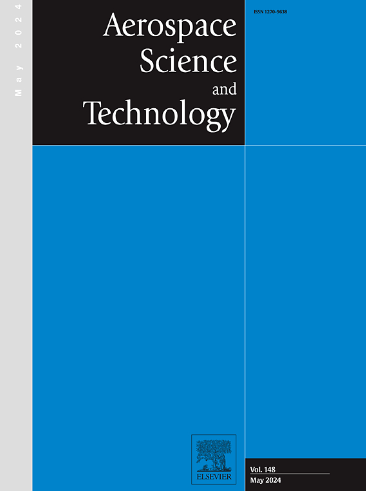Dynamical modelling of NASA's ACS3 solar sail mission
IF 5
1区 工程技术
Q1 ENGINEERING, AEROSPACE
引用次数: 0
Abstract
NASA's ACS3 mission aims to be the first Earth-bound solar sail to execute calibration steering laws for in-orbit estimation of solar-sail acceleration parameters. To maximise the mission's scientific return, this study identifies the physical effects to include in the dynamical model, the solar-sail acceleration parameters observable from flight data, and the uncertainties to consider during the orbit determination process. The sensitivity of the solar-sail dynamics to perturbations, model uncertainties, and sail-attitude errors is investigated by 1) comparing a reference orbit with modified orbits, each altered in a single dynamical aspect, and 2) evaluating the accuracy of modified models in reconstructing the reference orbit through iterative initial state adjustments.
For the one-sigma 10-meter observation noise level of the ACS3 mission and a seven-day arc, results indicate that higher-order lunar perturbations, planetary third-body effects, and relativistic corrections can be omitted from the dynamical model. Additionally, the geopotential expansion may be limited to degree and order 32. In contrast, the dynamics should include the effects of solid Earth tides, account for the instantaneous Sun-sailcraft distance in the solar radiation pressure model, and assume imperfect reflection from the sail surface in the solar and planetary radiation pressure models. Furthermore, the analysis reveals varying levels of observability for the sail optical coefficients, with frontside reflectivity and specularity showing the strongest influence on the solar-sail dynamics. Finally, systematic attitude errors and uncertainties in atmospheric density and accommodation coefficients are the most challenging factors to absorb through initial state adjustment, potentially complicating the estimation of solar-sail acceleration parameters.
NASA ACS3太阳帆任务的动力学建模
NASA的ACS3任务旨在成为第一个地球太阳帆,为太阳帆加速度参数的在轨估计执行校准转向律。为了最大限度地提高任务的科学回报,本研究确定了动力学模型中包括的物理效应、从飞行数据中可观察到的太阳帆加速度参数,以及在确定轨道过程中要考虑的不确定性。研究了太阳帆动力学对扰动、模型不确定性和姿态误差的敏感性,方法包括:1)比较参考轨道和修正轨道,每个轨道在单个动力学方面发生改变;2)评估修正模型通过迭代初始状态调整重建参考轨道的精度。对于ACS3任务的1 σ 10米观测噪声水平和7天弧,结果表明可以从动力学模型中省略高阶月球扰动、行星第三体效应和相对论修正。此外,位势的膨胀可能被限制为32阶和次。相比之下,动力学应包括固体地球潮汐的影响,在太阳辐射压力模型中考虑太阳与帆船的瞬时距离,并在太阳和行星辐射压力模型中假设来自帆表面的不完全反射。此外,分析还揭示了太阳帆光学系数的可观测性,其中正面反射率和镜面率对太阳帆动力学的影响最大。最后,系统姿态误差和大气密度和调节系数的不确定性是通过初始状态调整吸收的最具挑战性的因素,这可能使太阳帆加速度参数的估计复杂化。
本文章由计算机程序翻译,如有差异,请以英文原文为准。
求助全文
约1分钟内获得全文
求助全文
来源期刊

Aerospace Science and Technology
工程技术-工程:宇航
CiteScore
10.30
自引率
28.60%
发文量
654
审稿时长
54 days
期刊介绍:
Aerospace Science and Technology publishes articles of outstanding scientific quality. Each article is reviewed by two referees. The journal welcomes papers from a wide range of countries. This journal publishes original papers, review articles and short communications related to all fields of aerospace research, fundamental and applied, potential applications of which are clearly related to:
• The design and the manufacture of aircraft, helicopters, missiles, launchers and satellites
• The control of their environment
• The study of various systems they are involved in, as supports or as targets.
Authors are invited to submit papers on new advances in the following topics to aerospace applications:
• Fluid dynamics
• Energetics and propulsion
• Materials and structures
• Flight mechanics
• Navigation, guidance and control
• Acoustics
• Optics
• Electromagnetism and radar
• Signal and image processing
• Information processing
• Data fusion
• Decision aid
• Human behaviour
• Robotics and intelligent systems
• Complex system engineering.
Etc.
 求助内容:
求助内容: 应助结果提醒方式:
应助结果提醒方式:


